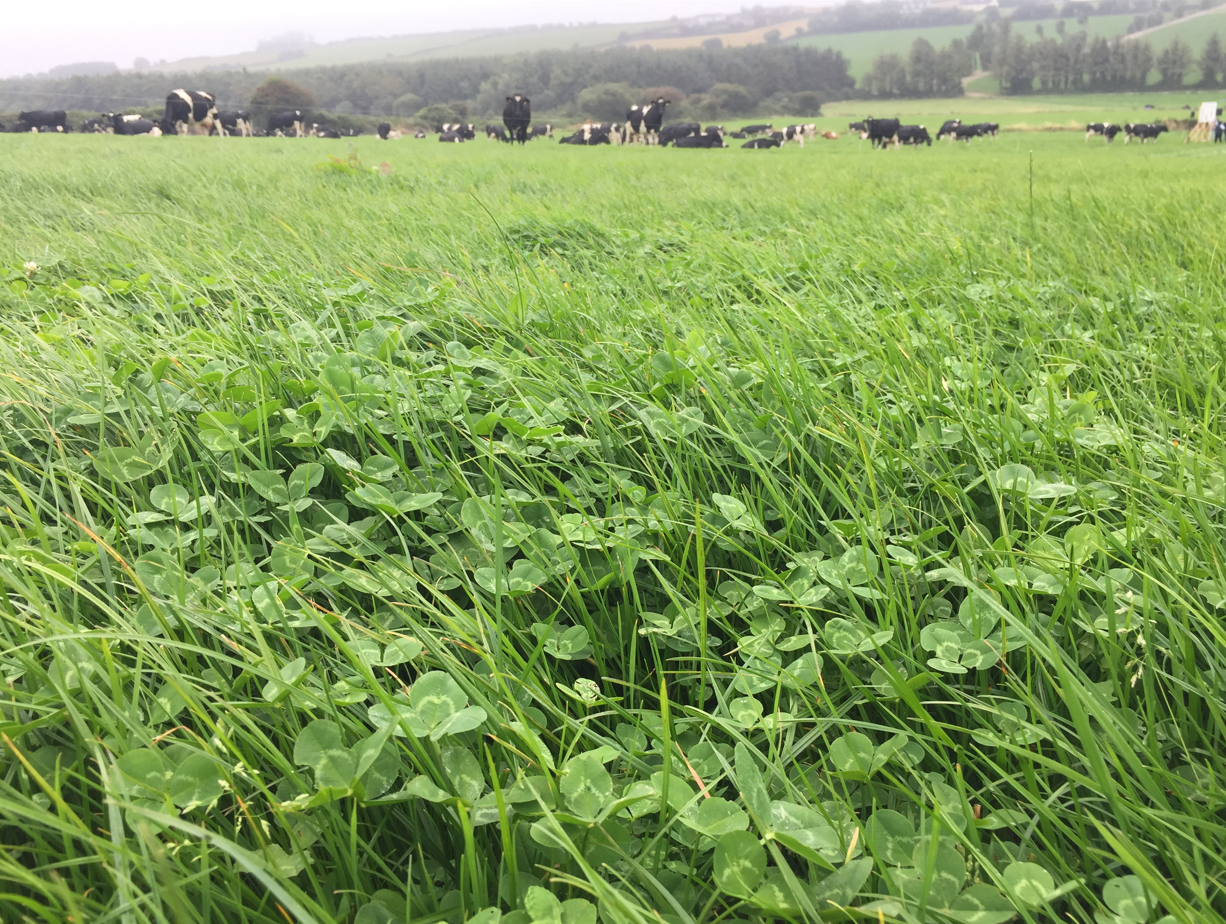Get a 24 hour weather forecast
You can click the button below to use your browser's location services to set your location
Find Your LocationOr you can enter the town you reside in to check the weather there.

In the months of April, May and June 10% of farms experience milk fat depression with a bulk tank butterfat of less than 3.3%, while 40% of farms experience a bulk tank butterfat of less than 3.6% – Dr Finbar Mulligan UCD
What causes milk fat to drop at grass:
Two conditions promote milk fat depression:
At a normal rumen pH unsaturated fat is converted to saturated fats by a process called biohydrogenation. When the rumen pH is lower than normal this process is altered, and milk fat depressing intermediaries are formed. These cause butterfat % to drop.
Are cows rumen pHs low at grass?
Young leafy grass with high levels of organic matter digestibility (OMD) and high levels of sugar (water soluble carbohydrate) leads to low rumen pH. Research done by UCD with commercial herds in 2008 has shown that 50% of our cows grazing grass have a low rumen pH (<5.8), while 11% have a rumen pH of less than 5.5. These cows were on average receiving 1.8kg of concentrates per day. International work done in New Zealand and Australia has also shown that grazing cows have a low rumen pH.
Rumen pH and Milk Fat % – UCD 2008 research
| pH > 5.5 (SARA) | pH < 5.8 (low pH) | Normal rumen pH | |
| Milk Fats % | 3.22 | 3.37 | 3.68 |
Grazing diets and milk fat depression:
Correct grassland management requires grazing grass at the 3-leaf stage down to 4cm with 18-21 day rotations.
Grass at this stage is at its highest in:
– OMD increasing the potential for low rumen pH.
– Oil content.
Consequences of milk fat depression:
Milk Fat is valuable, every 0.1% drop is costing you c.0.53c/ltr. For a herd of 100 cow milking 28 ltrs that’s c.€15 per day or c.€450 for a month.
Cost of milk fat depression for a 100 cows milking 28ltrs over 30 days
| Milk Drop | Milk Fat % | Milk revenue lost € |
| 4% | €0 | |
| -0.1% | 3.9% | €450 |
| -0.2% | 3.8% | €900 |
| -0.3% | 3.7% | €1350 |
| -0.4% | 3.6% | €1700 |
Are genetics playing a role?
As with everything a dietary plan can only allow a cow to express her genetic potential. Work from UCD has shown that cows with a high fat % PTA and high fat kg PTA are less likely to have an issue with milk fat depression. A herd with zero to negative PD for fat %
on their EBI report could expect milk fat to be around 3.6% in May.
Tackling low butterfats at grass:
Past experience with this will show that results are variable; a lot of work is required to ensure the cows will take in the straw. The best results I’ve seen are where farmers are willing to feed the hay/straw/ alfalfa daily in the paddocks with the cows. You do not however want to be replacing large volumes of high energy leafy grass with lower digestibility forages. 0.25-0.33kg of straw daily is more than enough.
Tackling low butterfat % with Dairygold Quality Feeds:
What is Rumi Shield Dairy?
Rumi Shield Dairy is a combination of technologies that alter the rumen environment to increase milk butterfat %. The nutritional solution to low butterfats is not a simple one and experience tells us that conventional means employed to solve this issue e.g. provision of long fibre, addition of rumen buffers etc. have given very poor results. For this reason, Dairygold has looked at some additional angles of attack and have created a multi-component product called Rumi Shield Dairy. Based on field experience, we expect an improvement of at least 0.2% units in butterfat where the oil content of the grass is the cause of the issue. These conditions typically occur in the early part of the grazing season from 2nd rotation on.
Rumi Shield Dairy is a perfect fit for the challenges that face Irish cows grazing lush grass and our experience is showing a very good return on the investment. As always, Dairygold’s focus is on bringing the science to farm level in order to increase farm profitability.
Please contact your local Area Sales Manager for more information on the product and available feed range
We have placed cookies on your computer to help make this website better. If you continue to use this site we will assume you are happy with this.
